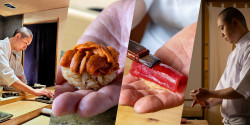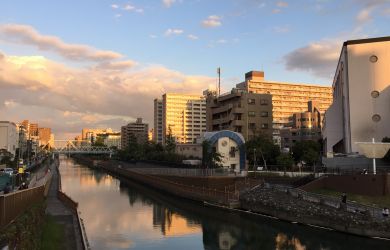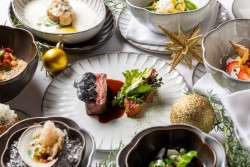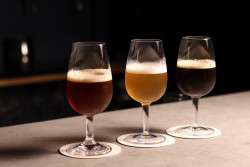
Originally published on metropolis.co.jp on May 2011

Photos by Jeff W. Richards
 Toritama sets itself apart from other yakitori restaurants by its panoply of chicken cuts. While rivals may serve a rarer breed or a fancier preparation, Toritama has deconstructed the noble chicken into 37 delectable parts, each with its own distinct taste and texture.
Toritama sets itself apart from other yakitori restaurants by its panoply of chicken cuts. While rivals may serve a rarer breed or a fancier preparation, Toritama has deconstructed the noble chicken into 37 delectable parts, each with its own distinct taste and texture.
Take, for example, the momo. The average carnivore considers a thigh a thigh, but the experts at Toritama know better. They’ve parsed it into six discrete tidbits. The usual cut, the kashiwa, is flavorful but differs from the obi, which is more succulent. Nearer the hipbone, the tasty hizagashira includes the slight crunch of cartilage, while the akiresu is mostly cartilage but still savory. And the meaty tougarashi is the denser thigh muscle as it narrows toward the knee.
Birds destined for a typical yakitori-ya are about 120 days old, says the master, but Toritama gets them younger at 65 days for more tender texture. They also use a higher class of poultry than the common broiler, but lower than the expensive regional jidori birds. This keeps costs down and most skewers average about ¥210.
Eating at Toritama can be like an anatomy lesson, with the master pointing out on his body where each part comes from. One popular order he won’t demonstrate is the visually evocative chochin. Two egg yolks, still attached to the uterus and birth canal, have been carefully removed and fitted onto a bamboo stick. The two orange orbs hang from each side of the meaty skewer as it is briefly grilled over the coals. To eat it, you pop a whole orb into your mouth where it bursts, delivering the warm yolk as you bite through the umbilical cord. It’s very good, but you can’t help thinking how each set of hanging yolks is obtained intact from the hen.
Besides chicken, Toritama offers other equally unusual and delicious skewers. The butabara shogayaki is a bacon-thin slice of pork belly rolled around a baton of fresh ginger. The wafer-like raclette cheese skewer (¥210) is grilled until it’s almost mochi-like, crisp and browned on the outside, but with a creamy melted core. The provolone cheese skewer (¥450), grilled until crisp, is also very tasty.
If you’d like a break from the meat, try the nishoku tofu, a bowl of refreshing black and white tofu (¥500), or a fresh tomato salad served with a dab of sea salt (¥350).
Toritama has an extensive sake, shochu, umeshu, beer and wine list. A generous cup of sake averages about ¥800. We left the sake selection up to the master; the progression of Hakkaisan from Niigata, Fukuchitose from Fukui, and Kaiun from Shizuoka, was excellent.
The narrow black-walled space of Toritama is taken up mostly by the long blond hinoki counter that seats about 20. The place is really jumping from around 6-9pm every evening. The attentive, friendly staff with indigo samue and hachimaki tied around their foreheads are in constant motion tending the grill, serving skewers, and removing empty dishes. The grill, fueled by binchotan coals, is vented, leaving the counter seating thankfully smokeless. Jazz from the speakers can be heard above the conversations along the counter.
The crowd here is a mix of business people, couples and the usual surprises at good Tokyo eateries, with a television personality not uncommon.
Reservations are necessary in the early evening, but after 9pm, you can usually walk in and snag a seat. The Hiroo location has two shops about a minute from each other, but we prefer the livelier bekkan shop.







